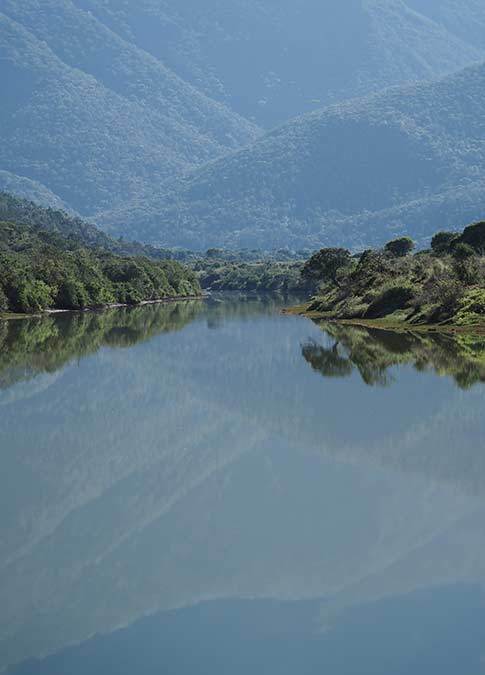Bushman's Poison Bush
As young boys my friend Graham and I spent a good deal of time pretending to be hunter-gatherers, living off the land. This involved, amongst other things, making bows and arrows for our “hunting” expeditions, and of course, tipping the arrows with poison as did the San (or “Bushmen” as they were referred to in those days). I cannot remember our ever having a successful hunt: we were agile enough and could run like hares, but our bows were rudimentary and we lacked the necessary skills and knowledge. Even had we managed to hit an animal it is doubtful whether our crude arrows would have done more than give it a fright. We spent much time discussing suitable poisons for the arrow-tip and experimented with a number of substances we considered to be toxic, but the results were inconclusive. As it turned out, that didn’t really matter.
Throughout the southern and eastern Cape coast there grows, often in rocky areas and in thickets, a small, evergreen tree or bush known as the bushman’s poison bush – Acokanthera oppositifolia. It is usually only a metre or two tall and has dark green, thick, leathery leaves that are often tinged with red, or are even bright red with new growth. In summer and sometimes at other times of the year, it bears dense clusters of sweetly scented white flowers. The fruits, with the size and appearance of small plums, are at first deep red, becoming dark purple when ripe. It is a striking and most attractive plant, but as its common name indicates, it is extremely toxic, containing cardiac glycosides that increase the contractions of the heart to such an extent that the flow of blood is eventually stopped, causing death.
The San pounded the wood of the bush into a rough powder and mixed it with water. This was then heated and the milky sap of a euphorbia added. They then smeared the glutinous fluid on the tips of their arrows. There are many tales testifying to its effectiveness. Even buffalo were brought down by the small arrows with their deadly coating. Yet interestingly the plant has also been used by indigenous peoples for the treatment of headaches, abdominal pains, toothache, anthrax and tapeworm, and perhaps working on the principle that it takes a poison to cure a poison, for the treatment of snakebite. Usually powdered leaves or roots are taken as snuff, but in the case of snakebite a paste is applied to the swollen parts avoiding the bite itself. In all instances very small quantities are used, for everyone is aware of its potentially lethal results.
More than a century ago Andrew Smith of St Cyrus* noted another unusual use of the plant in the vicinity of Kariega. Xhosa herdsmen broke up leaves in a bucket of water and gave this infusion to cattle to drink before moving the herd from inland pastures to nearer the sea. This they claimed prevented any harmful effects that might arise from transferring the cattle. This may well have taken place on nearby Barville Park, our own family farm, or even on Kariega itself before it became a reserve, although no one today remembers the practice.
So today I have the knowledge regarding the poison with which to tip my arrow. The tree is easily identifiable and the preparation of the poison is simple enough. (I am even aware that preparation should take place out of doors, and that there should be a lid on the pot while heating the wood, for even the fumes are considered to be toxic.) Over the years I have also learnt at least some of the hunter’s skills, and so am far better equipped to hunt like the San. Now, apart from any other possible hindrances, the only problem is that age has robbed me of the necessary agility and stamina. In fact any potential prey would be warned of my presence long in advance by the creaking of my joints!
*A Smith of St Cyrus. 2011 (1895) A CONTRIBUTION TO SOUTH AFRICAN MATERIA MEDICA. Facsimile reprint. Cory Library, Grahamstown.









